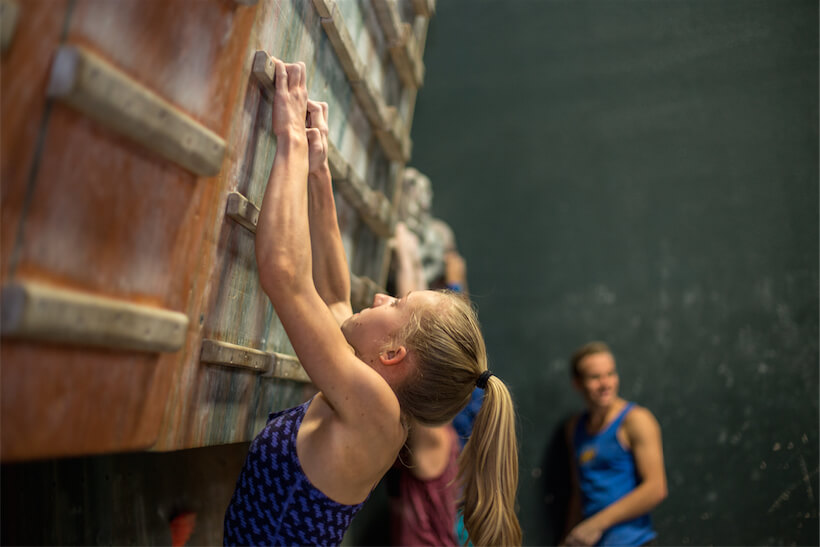Recently we received a question from a beginner climber who was interested in using our bouldering program. However, he was concerned that the program’s fingerboard and campus board workouts would put him at risk of injury since he is newer to climbing.
Here’s Diego’s question via email:
Hi,
I´ve been climbing for about 3 months (v2 level), and I am very interested in your bouldering program. However, I am a little bit worried about hang boards and finger strength parts, I´ve heard that I shouldn’t try them before I am v4 because I would run injury risk. Should I wait a couple of months before I start your program, or can the program be adapted to my novice level?
Best,
Diego
Here at Training Beta we are obviously all about training and training hard. However, we are also really concerned with doing so safely and preventing injury. So to help any novice climbers out there who are looking for advice on how to begin training we decided to post Seth’s response to this question. Here it is…
Seth’s Fingerboard and Campus Board Advice for Beginners:
We generally recommend that people are climbing at least V3 before they start using the fingerboard and campus board. That being said, there’s no reason that you couldn’t lower the intensity to a level that would be acceptable, or just replace those workouts with bouldering, or a previous workout from the program that you liked.
If you decide to just lower the intensity here’s what I would do for the various exercises:
Fingerboard:
I would recommend that you take off enough weight using a pulley system that you can easily hang on a 1.5-2 pad edge and complete all of the exercises using the same 4-finger open hand grip position. This isn’t going to do a ton for your fingers, but it will get your shoulders used to hanging. Make sure that you’re actively pulling your shoulders down and back. Don’t let them roll forward and stop if you feel any pain!
When you get to the point that you’re regularly climbing V3, then try reducing the size of the hold to a 1-pad edge and taking even more weight off. You might be taking off 70-80% of your body weight, which is totally fine. The goal isn’t to get a super hard workout, it’s to work on positioning, proper form, and get your shoulders used to holding tension while hanging.
Campus Board:
You can complete the exercises on the campus board on the biggest rungs with your feet on the ground, or on good footholds below the campus board. You can see examples of this in the campusing videos on our website.
Again, the goal isn’t to push yourself super hard. You’re just trying to get used to the body mechanics without stressing your joints too much. Make sure that your in complete control and that you’re maintaining good form. If you’re desperate, thrutching, or feel pain… stop!
Ultimately, when you’re climbing V2, intense climbing specific training shouldn’t be the focus of your efforts at the gym. Your goal should be to build a good base and to increase your technical ability proportionally to your physical ability.
However, if you’re spending a little time getting your body used to the tools that you will be using in the future by completing the motions with very low intensity, you will be putting yourself in a good position to transition into more difficult movements and heavier weights when your climbing ability starts to improve. This will require you to restrain yourself and limit the intensity, which some people have a hard time with. If you’re one of those people, then I would recommend replacing these workouts with climbing drills. – Seth Lytton
If you are interested in using one of our training programs, check them out by clicking on the banner bellow and remember they are scalable to any ability level so whether you are new to climbing or a seasoned veteran these programs will help you train hard, train smart, and reach your goals.
(photo courtesy of Savannah Cummins / @sav.cummins)
Other Articles You Might Like:
- Intro to Training for Bouldering -Climb Strong
- How to Climb Harder Than The Other Newbs: Training Wheels
- ClimbStrong: Revisiting the Novice Bouldering Program
- Mark and Mike Anderson’s Guide to Hangboard Training






I found the article interesting for someone looking to start fingerboard and campus training, however, it would be good to specify when to do these exercises, right before a climbing session? right after? as a separate session? if so, what would be the appropriate warm-up? Thanks.